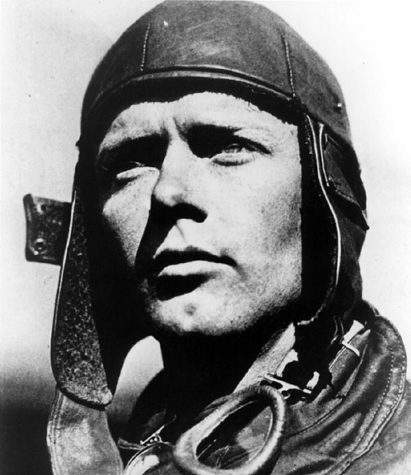Charles Augustus Lindbergh was an American aviator and military officer. On May 20–21, 1927, he made the first nonstop flight from New York City to Paris, a distance of 3,600 miles (5,800 km), flying alone for 33.5 hours. Lindbergh's aircraft, the Spirit of St. Louis, was designed and built by the Ryan Airline Company specifically to compete for the Orteig Prize for the first flight between the two cities. Although not the first transatlantic flight, it was the first solo transatlantic flight and the longest at the time by nearly 2,000 miles (3,200 km). It became known as one of the most consequential flights in history and ushered in a new era of air transportation between parts of the globe.
Lindbergh was raised mostly in Little Falls, Minnesota, and Washington, D.C., the son of prominent U.S. Congressman Charles August Lindbergh. He became a U.S. Army Air Service cadet in 1924, earning the rank of Second Lieutenant in 1925. Later that year, he was hired as a U.S. Air Mail pilot in the Greater St. Louis area, where he started to prepare for his historic 1927 transatlantic flight. For his flight, President Calvin Coolidge presented Lindbergh with both the Distinguished Flying Cross and Medal of Honor, the highest U.S. military award. He also earned the highest French Order of Merit, the Legion of Honor. In July 1927, he was promoted to the rank of Colonel in the U.S. Army Air Corps Reserve. His achievement spurred significant global interest in both commercial aviation and air mail, which revolutionized the aviation industry worldwide.
An isolationist in the coming European war, he was quickly branded as "Nazi-loving." However, when Pearl Harbor was bombed, bringing the United States into World War II, he was quick to volunteer for military service but was refused to be inducted due to his image. As a civilian volunteer employee, he went to the Pacific, where he flew combat missions (475th Fighter Group) without the knowledge of the brass, and actually shot down a Japanese plane. He logged over 50 missions against the Japanese. When his war record was finally made public, he was promoted to Brigadier General in the Air Force Reserve. After the war, he became a conservationist, working to save whales before it was popular. He won a Pulitzer Prize in 1954 for his autobiography, "The Spirit of St. Louis." He died of cancer in his home in Maui, Hawaii, at the age of 72.
Source of information: en.wikipedia.org, www.findagrave.com

